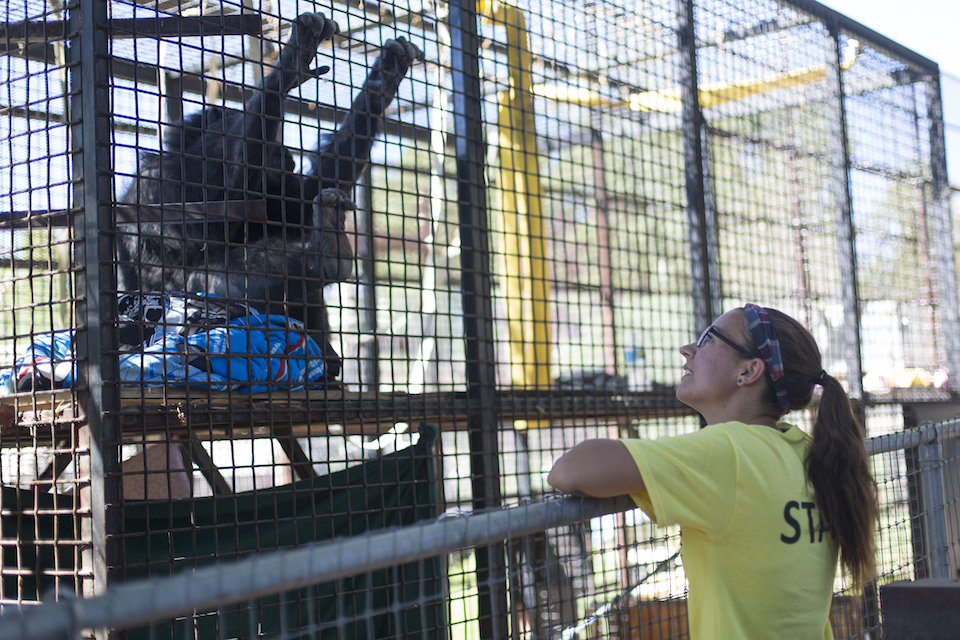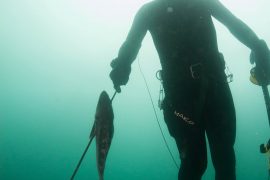written by Lindsay McWilliams | featured photo by Ben McBee
Topo, a fifty-year-old male chimp, wails and hoo-hoo-hoo-HAAAAHAAAAHs, banging repeatedly on a metal box. With the strength of eight men, he throws a three-year-old temper tantrum.
“We’re going to step back and turn our backs,” said Kevin Doner, a caregiver at Chimps Inc. “We’re showing him that we’re not a threat, that this is his house.”
The alpha male of the group, Topo, continues his display of intimidation until another chimp, Jackson, arrives to groom him, calming him down.
“A display is used in the wild to determine hierarchy or to show off to the other females and males in the group,” Doner said. “He was basically doing that to say to you guys, ‘Look how tough and strong I am.’”
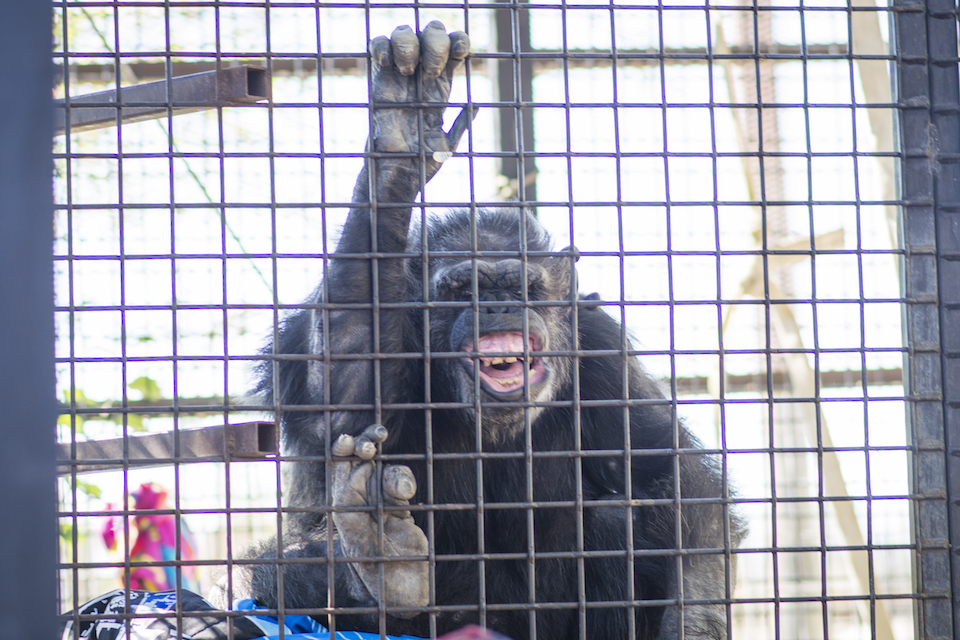
These chimps aren’t in the wild; they reside in a chimp sanctuary near Bend, one of its kind in all of Oregon. Knowing these displays, hierarchies and social interactions, like grooming, are key to caring for the seven traumatized chimps that live there.
Chimps Inc., which was started more than twenty years ago, takes in chimps who have lived in captivity all of their lives and wouldn’t be able to survive in the wild. Some were bred to be sold as pets, others to entertain in circuses or amusement parks, and others to be used for research. For chimps, being born in captivity does a lot of damage and often ensures a life of continuous captivity.
“Chimps in the wild are physically attached to their mothers from birth to age five,” Doner explained. “So if they’re in captivity, they don’t learn anything to prepare them for the wild—how to eat or interact with other chimps socially and politically. If they don’t get that, they suffer. Like kind of what Emmy’s doing right now, chewing on her hand. You wouldn’t see that in the wild, but you see it in captivity. Another one of our chimps is self-injurious and will bite her arms and legs out of anxiety.”
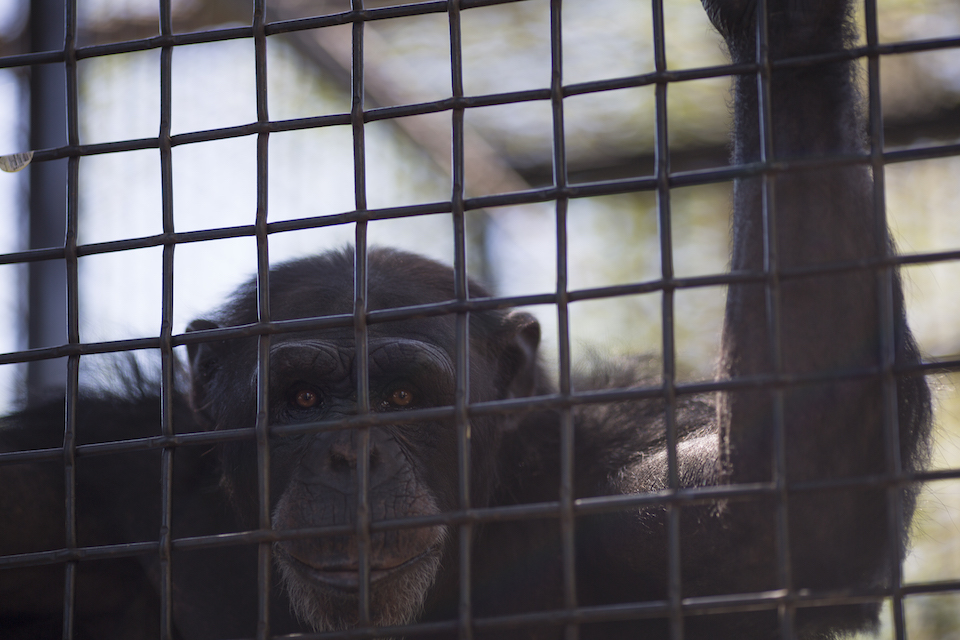
Monica Szczupider, executive assistant at Chimps Inc., stated that boredom is an extremely dangerous state for animals in captivity. As intelligent as these primates are, their brains need constant stimulation, just like humans. Doner recalled the story of resident chimp CJ, who was being kept as a pet in Las Vegas. At one point, CJ escaped from her own enclosure and managed to lock her owner inside of it.
At Chimps Inc., staff members and interns design new “enrichments” each day for the chimps to explore, from blanket forts to kiddie pools, to foraging simulation. The six staff members, five interns and several volunteers also maintain the vast enclosures that house these animals and prepare hundreds of pounds of fruits and vegetables for them to eat.
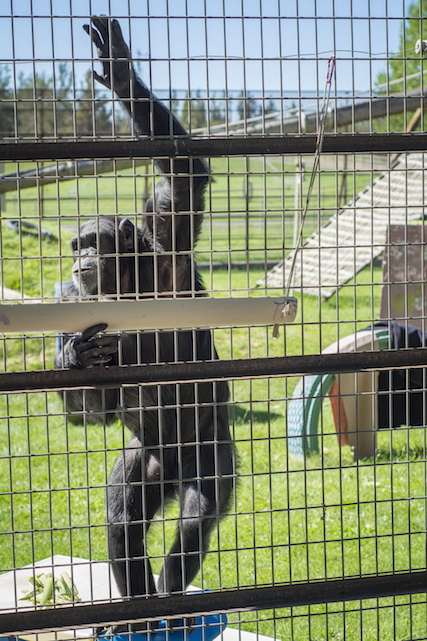
Chimps Inc. is not open to the public. The organization sticks to its belief that these animals should not be used to make money and they should be able to retire in peace and dignity. You can, however, “adopt” one of the chimps with a donation or donate in memory of a deceased chimp through their website at chimps-inc.org.


